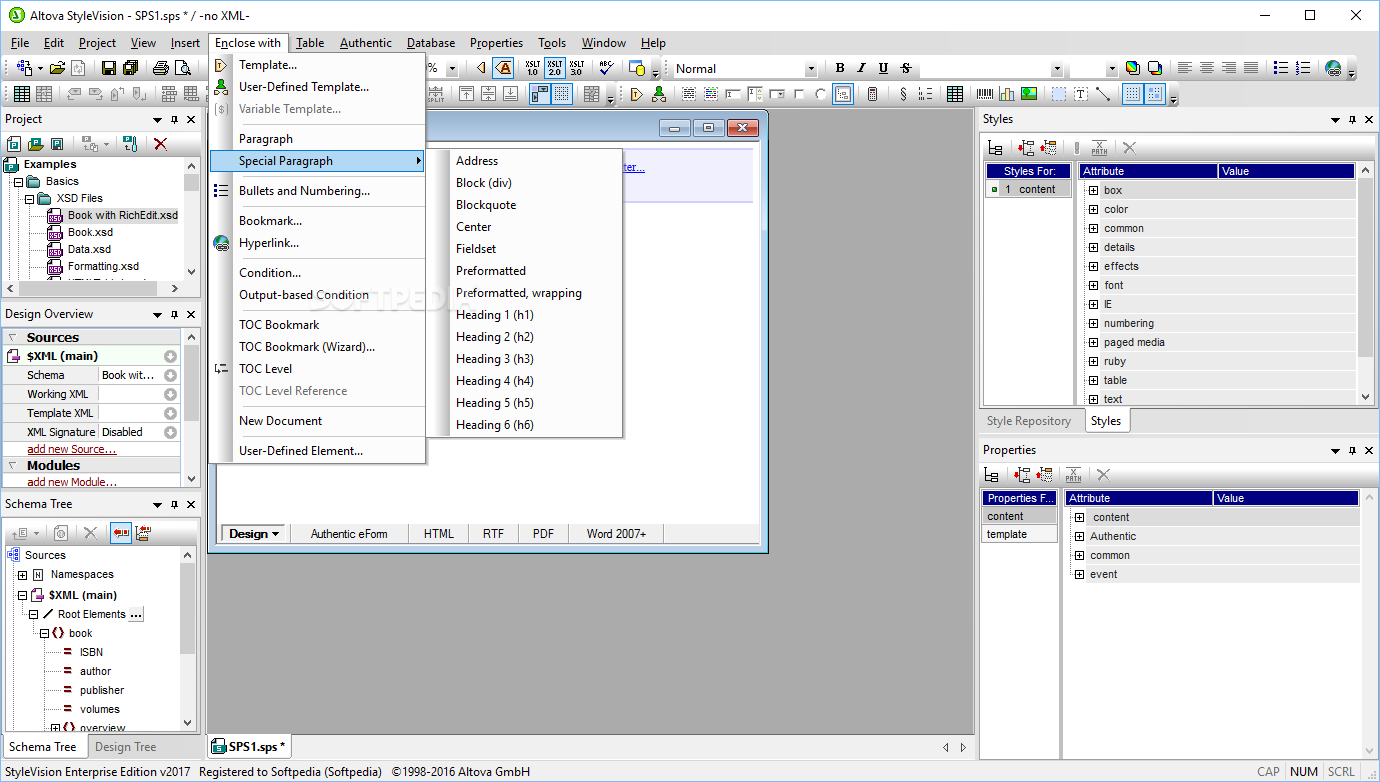
You can create schemas quickly and easily, there is support for XInclude and XPointer, a built-in XQuery 1.0 processor, and you can transform your XML document as well. There are structural editing features like line numbering, indentation, bookmarks, as well as expandable and collapsible element to aid in navigation. You also have intelligent editing such that if a schema is associated with your XML document, the auto-completion feature of Text View provides help in editing. If there is something wrong with your document, you don't have to wait till it fails and then try to figure out what is wrong with it XMLSpy does it for you. Next it has a built-in well-formedness checker and validator. You can look at your XML document as a text doc, a grid format, and as a WYSIWYG view. I personally think that this is one of those kinds of features that once you get used to it, it's hard to work without XMLSpy. One of the other main features XMLSpy includes is the ability to edit XML documents in multiple formats. Along with being an XML editor, it offers a code generator, file converters, a debugger, a profiler, and integration into Visual Studio. Its aim is to be a productivity enhancer for J2EE. What is XMLSpy 2008? It is a XML development environment for designing, editing, and debugging enterprise class applications that involve XML, XML Schema, XSL/XSLT, XQuery, SOAP, WSDL, and Web service technologies. There is also a Professional version and if you would like to view the differences between the two, you can check out the feature comparison list. The version that I am reviewing is XMLSpy 2008 release 2 which came out on and it is based on the Enterprise version. XMLSpy allows programmers to create XML-based applications and Web services in a more dynamic and easier to understand environment.

XMLSpy 2008 is the latest version of Altova's integrated development environment (IDE) for XML.


 0 kommentar(er)
0 kommentar(er)
